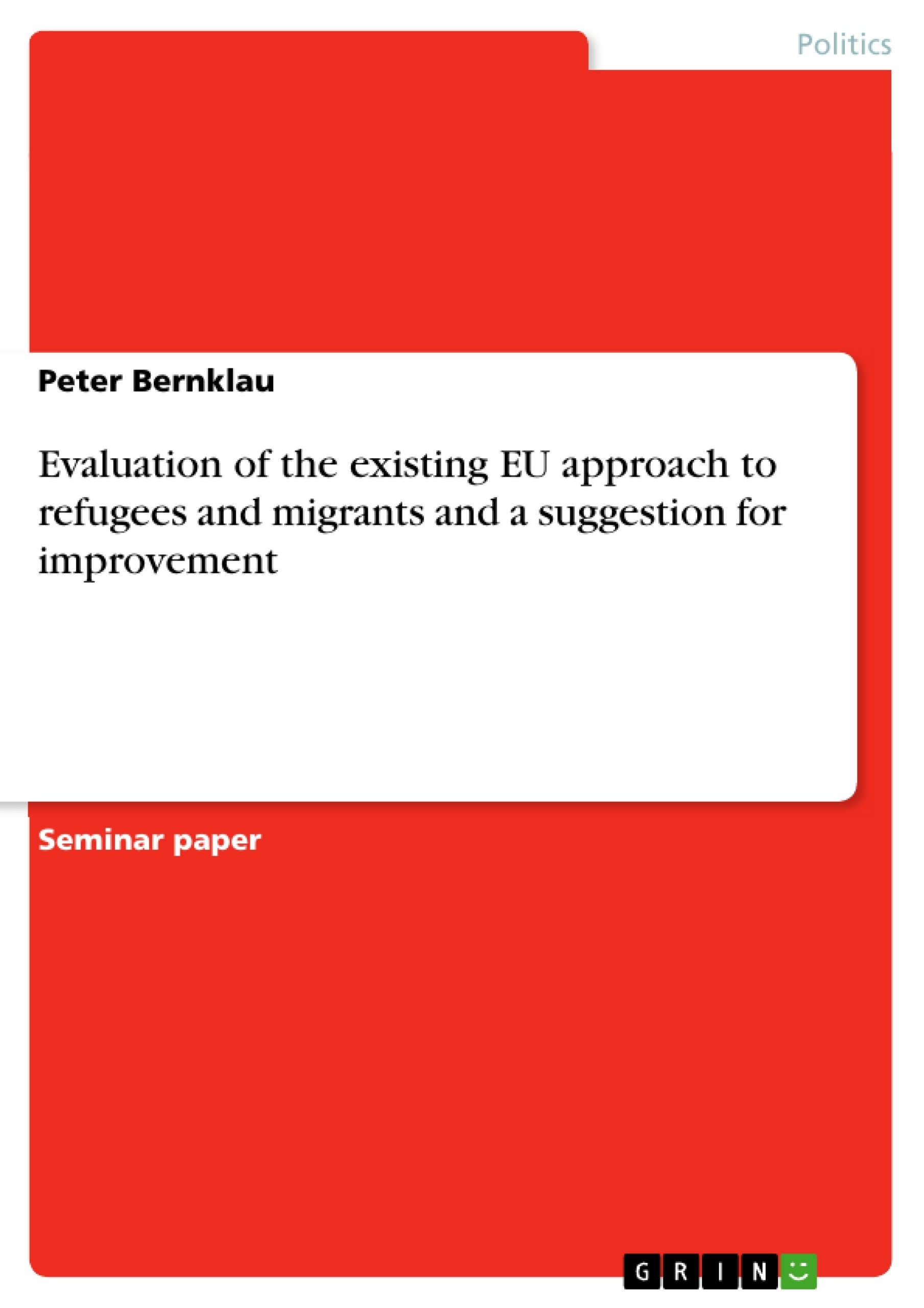Why is the current flow of migration generally called a crisis? In the last century, Europe faced major flows of migration and large movements of people, especially during and after the world wars. Nevertheless, the term crisis was never associated with refugees or used in order to label a flow of migration before.
A crisis is an expression for a time of intense difficulty or danger (Oxford University Press, 2016). Therefore, in the context of the EU and the current situation, the term indicates that the refugees are posing enormous difficulties and dangers to the European Union. More specific, these difficulties consist of the search for a mutual European agreement over the distribution and the acceptance of asylum seekers. This discussion is threatening the unity of Europe and causing therefore dangers to the uncertain future of the European Union.
The following chapter provides a review of the reasons for, origins and the development of the refugee crisis. It explains where and when the crisis started and how it progressed. The period of investigation starts in May 2011 and examines the main developments until the 30th of April 2016, later developments are not considered. Subsequently, through the gathered information, the European approach towards the refugees and migrants is evaluated, analysed, and compared to possible solutions. The succeeding last chapter finally suggests a fitting problem-solving approach, which would enable the EU to tackle the refugee crisis. This approach includes the possibility for Europe to solve the whole issue together as a unity while still respecting the desires of each EU member state.
Inhaltsverzeichnis (Table of Contents)
- I. Introduction
- II. The EU Refugee Crisis
- III. Evaluation of the EU Approach to Refugees and Migrants
- IV. Suggestion for Improvement
Zielsetzung und Themenschwerpunkte (Objectives and Key Themes)
This assignment aims to evaluate the current EU approach to refugees and migrants, analyzing the ongoing refugee crisis and suggesting improvements for a more effective and humane response. The work focuses on the origins, development, and challenges of the refugee crisis, specifically focusing on the period between May 2011 and April 2016.
- The origins and development of the EU refugee crisis
- The EU's approach to refugees and migrants
- The challenges of managing the refugee crisis
- Potential solutions and improvements to the EU's response
- The impact of the refugee crisis on European unity and stability
Zusammenfassung der Kapitel (Chapter Summaries)
- I. Introduction: This chapter introduces the topic of the EU refugee crisis and defines the term "crisis" in the context of refugee flows. It explores the reasons why the current migration is considered a crisis and highlights the challenges the EU faces in finding a unified response.
- II. The EU Refugee Crisis: This chapter provides a detailed account of the origins and development of the refugee crisis, starting in May 2011 and tracing the events leading to the current situation. It focuses on the major events and developments that have shaped the crisis, examining the flow of refugees and the responses from various countries and organizations.
Schlüsselwörter (Keywords)
The main keywords and focus topics of the text include: EU refugee crisis, migration, asylum seekers, Syrian refugees, European unity, border security, humanitarian response, policy evaluation, problem-solving, international cooperation.
- Citation du texte
- Peter Bernklau (Auteur), 2016, Evaluation of the existing EU approach to refugees and migrants and a suggestion for improvement, Munich, GRIN Verlag, https://www.grin.com/document/338579



